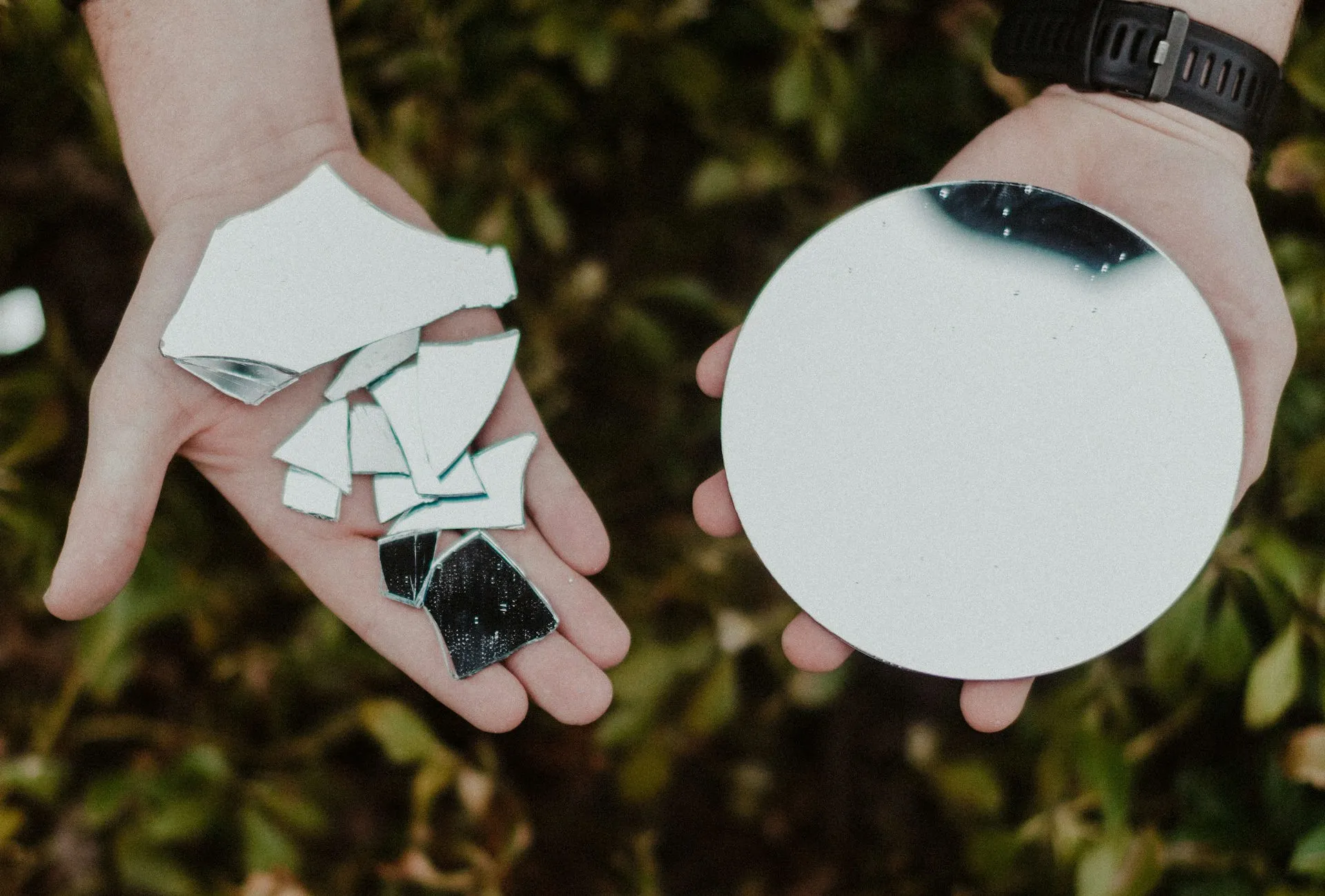Welcome to the Broken Mirrors exhibit.
Shattered reflections invite contemplation of both beauty and distortion. These mirrors, once pristine, now lie in fractured pieces, each shard capturing fragmented glimpses of the world around it. The broken surfaces, jagged and uneven, splinter light into unpredictable patterns, transforming the act of reflection into a metaphor for the fragility of perception. No longer capable of offering a clear view, the shattered mirrors remind us that what we see is often fragmented, incomplete, and refracted through the lens of time and damage.
Historically, mirrors have been both functional objects and symbols of introspection, used for personal grooming and as tools of self-examination. The process of making them, through silvering glass—where a thin layer of reflective metal, often silver or mercury, is applied to the back of a glass pane—was an art in itself. The craftsmanship required to create a flawless, reflective surface was delicate and precise, making the eventual breakage of these mirrors all the more poignant. In their shattered state, the mirrors lose their practical use but gain a haunting allure, each crack and shard telling a story of sudden impact or slow decay.
The broken mirrors also carry with them cultural symbolism, evoking ancient superstitions that link a shattered mirror to bad luck or the fragmentation of the self. In literature and art, broken mirrors have often represented the fragility of identity or the distortion of reality. Here, in this exhibit, they become more than just damaged objects; they are vessels of both reflection and rupture. They challenge us to reconsider how we see ourselves and the world, asking whether true clarity is ever really possible—or whether, like these mirrors, our perceptions are always shaped by fractures and imperfections.
 Museum of Broken Things
Museum of Broken Things
